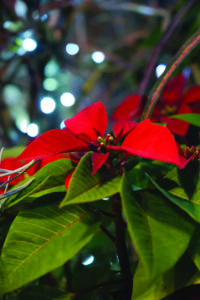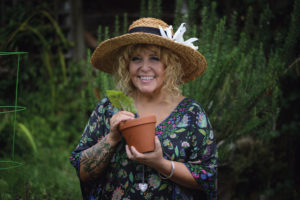Planning on a home office for 2022? Going back to work soon and want to take a green friend with you?
Indoor plants can make us healthy, happy, calm, more focused and breathe a little easier, science has proved it, but can you plonk any old plant anywhere? The secret is, there is no such thing as an ‘indoor’ plant, just ones that usually live in the understories of forests and jungles, the shadier side of life on rocky outcrops, caves and cliffs and ones who are simply good at adaptation.
While you must ensure that your indoor environment matches your plant’s needs to thrive there are also meanings and energies that many cultures across the world attribute to plants.
Here are some of my suggestions for plants that will not only match your workspace but will bring with them some interesting and helpful energies.
Almost indestructible
These are the tough guys of the plant world, but you can also use self-watering pots and devices to do the work for you and slow-release fertilisers if you want to try other plants.
Cast Iron Plant (Aspidistra elatior) is almost indestructible.
It adapts, half dies and revives but if you treat it nicely this plant will love you back.
It is said that this plant brings good work ethics and increases productivity.
ZZ Plant (Zamioculcas zamiifolia) can handle just about whatever you can dish up and still look amazing.
Low light is also no problem for this stunner either.
Said to increase security and smooth negotiations.
An honourable mention goes to Spider Plant because while not as tough as most, they are easy to grow.
Spider Plants (Chlorophytum colosum) are enjoying a big comeback from their 1970s heyday and why not? They are also very easy to propagate from their ‘jumping spiders’.
It is said they boost mindfulness.
Low light lovers
You will need to find plants that can survive and hopefully thrive in these low light conditions or place a few strategic grow lights over them.
Devil’s Ivy (Epipremnum aureum) will grow in filtered light to shade and can handle the top few centimetres drying out.
In the Language of Plants, they are thought to build prosperity and block unwanted visitors.
Lady Palm (Rhapis excelsa) is a shady lady as well and only needs watering once a week.
Thought to help stimulate new ideas and encourage communication.
Radiator Plant (Peperomia spp.) suits a desk but will tolerate a bit of shade.
They are very easy to grow with a huge number of beautiful varieties available.
This plant brings with it the ability to see the facts and truth.
High light lovers
Care needs to be taken if you have a lot of light and placement of your plants.
Do not sit them on windowsills or next to window if they don’t open as it will be akin to sticking it in an oven.
Move the plants into the middle of rooms.
Light loving plants: Swiss Cheese Vine (Monstera obliqua) likes to be in the light and makes a lovely desk plant on a trellis or even left to run along surfaces.
Can help boost opportunities and helps others see your point of view.
Wax Plant (Hoya spp.) can be trained to climb up or along a support or left to cascade over an edge.
They also do not need much water, preferring things on the dry side.
This plant brings with it protection and prosperity.
We like it hot
Beware, all the ways you try to cool yourself will not be taken as well by the plants but if the area is hot, try these.
Rubber Plant (Ficus elastica) prefers things on the warmer side and humid side so make such you mist, mist mist! In winter they can survive with a drink every few weeks.
They boost interest and help those learning.
Succulents and Cacti are both warmth lovers and enjoy light so don’t keep these babies in the corner.
Don’t overwater as this is the usual cause of death.
With various meanings, most will bring longevity and ingenuity.
We like it cool
Chilled environments also usually have dry air.
If your workspace is just a touch on the cooler side, then you can try standing pots on trays filled with pebbles that are kept moist.
Jade Plant (Crassula ovata) does need bright light, but it can live happily in cooler temperatures and as a bonus, it can stay alive for weeks without watering.
Jade Plant brings luck and financial gains.
Dragon Tree (Dracaena marginate) is a ‘false palm’ meaning it looks like a palm but is not one and this leaves us with the palm feel but a plant that can tolerate cooler spaces.
This plant will help heal relationships.
Desk Mates
I’ve had a few accidents with water and plants on my desks so while you can forgo flowers and plants around electronics and paperwork all together, these two can work well with you.
Painted-leaf Begonia (Begonia rex) are great substitutes for flowers with their pretty colours, but they will need to be watered with rain or distilled water.
These plants boost creative thinking and set a firm boundary.
Air Plants (Tillandsia spp.) are the perfect desk mates because there are no pots of dirt or saucers of water to tip onto your electronics.
They do need good airflow, just like you! They bring calm and peacefulness.
GARDENING GUIDE FOR COAST GARDENERS THIS WEEK
You can plant the following now: Culinary herbs, beans, beetroot, broccoli, brussels sprouts, cabbages, cape gooseberry, capsicum, carrot, cauliflower, celery, chicory, chilli, choko, cress, cucumber, eggplant, endive, kohlrabi, leek, lettuce, marrow, melons, mustard, okra, parsnip, pumpkin, radish, rhubarb, rocket, salsify, silverbeet, spring onion, sweetcorn, squash, tomato, ageratum, alyssum, amaranths, aster, begonia, California poppy, celosia, cockscomb, coleus, cosmos, cyclamen, gazania, gerbera, marigold, nasturtium, petunia, phlox, portulaca, rudbeckia, salvia, snapdragon, sunflower, torenia, verbena, vinca, Viscaria, waratah, zinnia.
Garden Book Review – The Hidden Histories of Houseplants
By Maddie & Alice Bailey, Hardie Grant London, 2021 ISBN: 9781784884055
When did our modern obsession with houseplants begin? They also feature in mass produced artworks, textiles, and designs.
Each of our indoor friends has a fascinating back-story and often connections with fashion, culture, and even politics.
Maddie and Alice have written a gorgeously illustrated book full of the tales and histories of many of our beloved indoor green friends.
Daughters of highly respected horticulturalist and author Fran Bailey, they also run the destination plant stores ‘Forest London’ and I think they have done their heritage proud with this title.
It is a fresh, fascinating, and beautiful plant book for all.
You and Your Garden: Can I Plant my Christmas Poinsettia? Crystal from Woy Woy
Q: Hi Cheralyn,
I’ve heard that you can plant a poinsettia in the garden.
Is that right and if so, what do I need to do?
A. Hi Crystal, if you go down to the garden centres today, you will find a very reasonably priced plant that will turn into a rather lovely shrub that provides a burst of winter colour every year in your garden.
You also may have been given or purchased a poinsettia already this Christmas and they can most certainly grow in your garden.
Find a sheltered, sunny spot, but they will tolerate part shade.
Dig over the soil and improve with some well-rotted cow manure or commercial soil improver about two weeks before you plan to plant.
Take the poinsettia out of the pot and gently tease out the roots.
Don’t remove all the soil from the root ball.
Dig a hole twice as wide as the root ball and the same depth as it.
Place into the hole and then back-fill, pressing down soil around the plant and water deeply.
Make sure you surround with an organic mulch and keep at least 6cm from the base of the plant.
Feed with a manure or weed tea or commercial liquid feed every fortnight.
Your poinsettia flowers are the tiny cream-coloured blooms surrounded by bright red, but sometimes white or pink, bracts (modified leaves).
This show of colour occurs naturally in winter and to make this happen in Australia for the popular Christmas potted plants they are placed in cold and dark green houses.
Poinsettias are prone to aphids and thrips so a pyrethrum spray will help if you notice them.
Prune back dead or dying branches in late winter to about 10cm and leave a few leaves on the stem to encourage new growth.
Next Week: Technology for Gardeners
Cheralyn Darcey is a gardening author, community garden coordinator and along with Pete Little, hosts ‘At Home with The Gardening Gang’ 8 – 10am live every Saturday on CoastFM963.
She is also co-host of @MostlyAboutPlants a weekly botanical history & gardening podcast with Victoria White.
Send your gardening questions, events, and news to: gardeningcentralcoast@gmail.com






